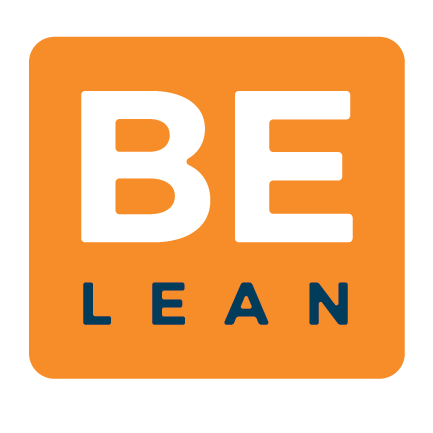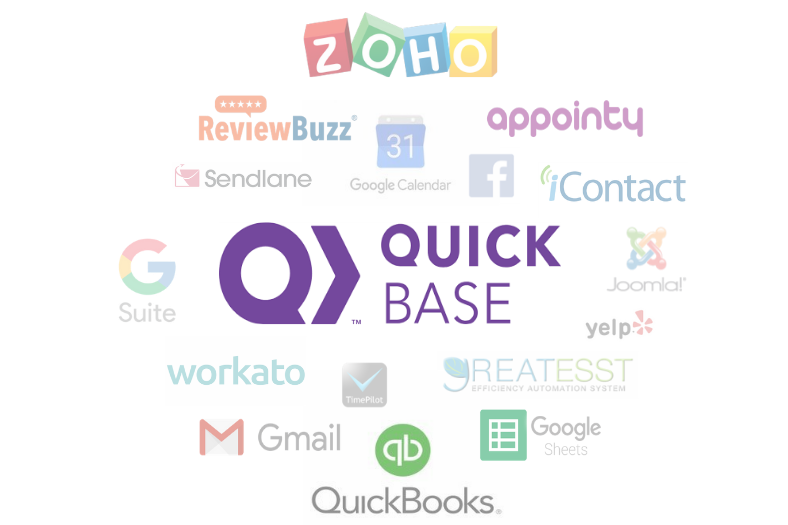How We Should Have Done It
Two energy startups. One succeeded. One Failed. This is what I learned.
In May of 2009, I drove to a split-level house at the end of a cul de sac in Columbia, MD. I walked inside for a job interview.
In the back room of the house, three young guys were running a budding energy startup called greeNEWit. It was the beginning of an eight year rollercoaster ride for me as I helped grow the company out of the house into a leader of Maryland’s energy efficiency economy.
Around the very same time, just down the road in Washington DC, Zack Moore and Shannon Sentman met by chance at a local US Green Building Council event.
Zack had started his career in the oil and gas industry and came to DC wanting to repent for his sins and build a business that could have a positive impact on the environment. Shannon was practicing law but had always considered himself a “closet environmentalist” with a desire to reduce greenhouse gas emissions. Their encounter laid the seeds for what would become Sol Vista, an energy solutions company in the hotel industry.
I recently got to know Zack and Shannon in their office around the block from me in the Silver Spring Innovation Center (SSIC). As they told me their story, I was struck by how uncannily similar it was to greeNEWit’s.
Both companies started with the same vision of unlocking the potential trapped inside of buildings in the form of energy costs. Both raised capital to develop software products. Both faced similar setbacks and market challenges.
Yet ten years later, Sol Vista is a market leader with a bright future while greeNEWit closed its doors days shy of its ninth year in business.
I couldn’t help but walk away from my time spent with the Sol Vista guys wondering, what could we have done differently…?
After reflecting on that conversation, three key lessons came to light.
Lesson 1: Choose what to test, and stay focused on the rest
The beginnings of both companies were similar in many regards. greeNEWit and Sol Vista bootstrapped their early years, trying to figure things out on the fly. Zack told me about submitting their earliest proposals, not knowing how they’d actually implement the project if the client said yes.
My first two years at greeNEWit were the same. Every project felt like something we had never done before.
But there was a major difference between Sol Vista’s early strategy to that of greeNEWit’s: focus.
When Sol Vista launched, they were singularly focused on the hospitality market. They had connections in the space and leveraged those relationships to approach hotel owners one by one. They prioritized owners of large portfolios to keep acquisition costs low. They named their top prospect: Pebblebrook Hotel Trust.
While Shannon and Zack were less certain about exactly which service offerings the company should focus on, their clarity about their target market and sales strategy gave them the grounding to experiment with that aspect of their business model.
The greeNEWit team in 2012
In contrast, while greeNEWit was also experimenting with service offerings, our focus wavered across a variety of customer segments. Only two years off the ground with a team less than ten, greeNEWit had separate departments for residential, commercial, and government services. At the time, I was learning how to perform home energy audits as I was writing a federal grant application to develop smart grid technology.
We were moving in too many directions without making much headway in any one.
The Lesson - You can test out different customer segments, and you can test out different service offerings. But you can’t do both at the same time.
Lesson 2: Innovate for customers before anybody else
Although Sol Vista started out as an energy services provider, they didn’t want to remain in the services field exclusively.
Shannon Sentman, CEO, Sol Vista
“I knew what it was like billing by the hour from my time practicing law,” Shannon told me. “I wanted to build a business that could bring in recurring revenue instead.”
So early on, Shannon and Zack looked for opportunities to productize their offerings.
When they finally landed work with their top target, Pebblebrook, it gave them the opportunity they were looking for. The work from Pebblebrook provided the cash flow they needed to start investing in technology development, and the traction allowed them to raise an investment with TEDCO.
The Pebblebrook contract also gave them something even more valuable - customer feedback.
“We built our Skywalk platform to answer the questions that our clients had,” Shannon told me.
Zack Moore, SVP Customer Solutions, Sol Vista
“Skywalk not only helped give our clients the information they were looking for,” Zack continued, “but it opened up opportunities to build out our service offerings into new areas like competitive energy supply and demand response without having to bill for hourly work.”
greeNEWit had similar aspirations as the company was beginning to grow. What started out as an idea to automate the reports we spent hours writing for our customers morphed into something much larger after a visit to our industry’s annual conference in 2010.
After raising $100k in angel funds, greeNEWit pulled back it’s resources from servicing clients to invest in building a technology solution for other contractors and program administrators in the energy efficiency industry. It was a gamble that could have paid off big. Instead, every investment dollar was spent chasing the ever changing requirements of industry leaders who couldn’t agree on a set of industry-wide standards.
The result was a product that worked great for greeNEWit, but didn’t deliver any additional value to our customers.
The Lesson - There will always be cheerleaders for innovative ideas. But the only voices that matter are paying customers.
Lesson 3: Invest in efficiency when you’re up against the ropes. And when you’re not.
Having run out of investment funds and without enough in the bank to make our next payroll, greeNEWit had to make a tough decision. We pivoted away from our software dreams back to contracting services to participate in a new multifamily energy efficiency program.
The new contract saved the business. greeNEWit went from nearly closing its doors to grossing $5.5 Million over the next year.
Sol Vista was also experiencing success after getting their break with Pebblebrook. Skywalk was wowing their customers and bringing in new streams of revenue.
But Sol Vista and greeNEWit’s successes also carried risk. 90% of both company’s revenues were coming from one source.
As it happened, both companies ended up losing a significant portion of those revenue streams.
Sol Vista was undercut by a competitor who replicated their software and sold it for a fraction of the price. Not only that, but they used the lower price point to poach away Pebblebrook, Sol Vista’s largest client.
“It essentially cut the business in half,” Shannon shared. “Seeking capital to keep us afloat wasn’t going to solve the problem. We needed to find a way to optimize our operations so that we could lower the price of Skywalk and be competitive.”
So that’s what they did. They invested in efficiency.
“We looked at every aspect of our business for opportunities to reduce cost without compromising our clients’ experience.” Zack recounted. “For example, we automated the entire onboarding process - from welcome emails to form completions - using Skywalk. The improvements slashed our costs by as much as 80% in some areas.”
greeNEWit faced similar challenges when our multifamily contract got slashed due to programmatic budget cuts. We adapted by optimizing our operations and investing the savings into developing new service offerings.
As the company transitioned, the spreadsheets and off the shelf tools we were using to run the business just couldn’t keep up. Neither could our proprietary software which was too rigid and costly to change.
Looking for a leaner way to run our complex business, we found a low-code app development platform called Quick Base. Quick Base enabled us to build a completely custom CRM and Project Management tool for a fraction of what it cost to build our proprietary software. Any by connecting Quick Base with the other applications we used, we eliminated redundant manual data entry, sped up cash cycles, and measured our performance like never before.
Our efforts saved us over $250k, and saved the business yet again.
The Lesson - There’s a tremendous amount of capital trapped within the inefficient operations of most businesses. Unlock it by investing in efficiency.
Takeaways
Investing in efficiency extended the runway for both companies to find a way out of challenging times.
Sol Vista eventually won back Pebblebrook after their competitor went out of business. They credit their investments in efficiency as a major factor.
“While our competitor poured a million dollars into trying to make their product do everything that Skywalk could do, we diligently optimized our processes until we could beat them in price point,” Zack told me. “When we closed a deal with a major client they were competing with us for, it was the final straw. They closed shop, and we won back our clients.”
Wrapping up our discussion, I asked Zack and Shannon what one lesson they thought was the most responsible for their success thus far.
“A commitment to learning,” Shannon said. “As an entrepreneur, there’s no one right answer out there that you can just look up. You have to be smart enough to figure it out for yourself, and tough enough to push through when you haven’t.”
Looking back, I could see how this early commitment to learning explains, in part, why things turned out differently for Sol Vista and greeNEWit.
While greeNEWit was trying to sell an array of services to a variety of markets, Sol Vista was focused on learning what their target market valued most.
While greeNEWit was building software in anticipation of industry trends that never happened, Sol Vista was building software based on what they learned from their customers.
And while greeNEWit optimized its operations as it was pivoting from one strategy to the next, Sol Vista committed to learning first, then streamlining.
Ultimately, though greeNEWit had built a world-class operating infrastructure, culture, and team, we never learned how to create a viable business model in a volatile subsidized market.
My experience with greeNEWit has left me in total appreciation for what Sol Vista has achieved. Their strategic focus, unwavering commitment to their clients, and tenacity to optimize their way out of difficult times is to be applauded. And above all, their commitment to a culture of learning is an example for all to follow.






